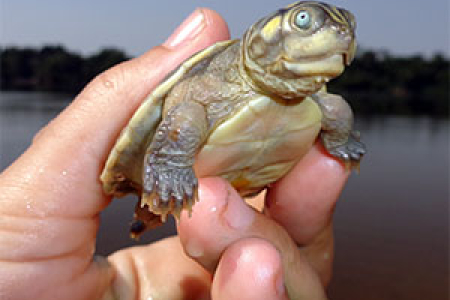Students prepare for turtle trip to Amazon
Charles Darwin University students will be given access to protected areas in the Amazon jungle when they visit Brazil this year to study the Giant South American Turtle.
Professor Jenny Davis, from the School of Environment, said the two-week field trip in November would take in 600 km of the Amazon River between two sites that were open only to scientific research.
“It’s an exciting opportunity for students to experience a portion of the largest and most biologically diverse tropical rainforest in the world,” Professor Davis said.
“They will use the Giant South American Turtle as a case study to learn about the long-term efforts to protect riverine turtles in the Amazon.”
Professor Davis said the Brazil Amazon study trip was one of five “field intensives” on offer in the School of Environment this year.
“Plans are well advanced for our trips to West Timor in about two weeks’ time, and to Central Java next month.
“We will also run two field trips in the Northern Territory, with one that focuses on tropical savanna biomes in North Australia and the other on desert ecology in Central Australia.”
Professor Davis said the intensives were designed to give students who were passionate about science an opportunity to enrich the online and classroom aspects of their courses with a bona-fide outdoor experience.
“We are fortunate to have some fantastic ecosystems on our doorstep and in neighbouring Indonesia where we can still measure plants and animals, and see for ourselves how the environment is functioning.
“Coupled with the researchers, academics and teaching expertise that we offer, these intensives become a significant point of difference for Charles Darwin University.”
Professor Davis said each intensive was subject to limited placements and other conditions. Further details can be found at W: cdu.edu.au/environment/intensives
